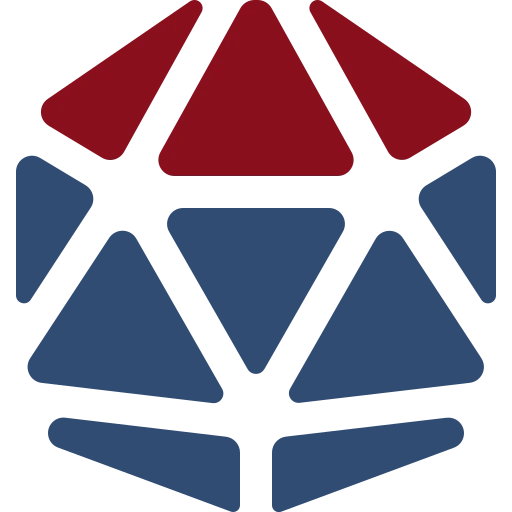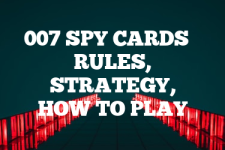On the Edge: Strategies, Rules, and Deck Building
Introduction
On the Edge is a collectible card game that’s been around since 1994, released not long after MTG, set in the weird and wild world of Al Amarja, a fictional island where players battle it out using groups, resources, and events to gain control. It’s a bit like other card games where you build a deck and try to outsmart your opponents, but with its own unique twists.

The game was created by Atlas Games, the same folks who brought us other cool titles like Gloom and Ars Magica. On the Edge has a bunch of different cards, each with their own powers and abilities that can turn the tide of the game. Unfortunately, if you’re looking to get your hands on new packs, you’re out of luck. The game isn’t in print anymore, but you can still find cards out there in the wild or online from collectors.
Quick Tip for On the Edge
Always keep an eye on your opponent’s resources. Knowing what they have can give you a big advantage!
Rules for playing On the Edge
Getting into On the Edge can seem a bit daunting at first, but once you get the hang of it, it’s a blast. The game’s got a few key rules you need to know:
- Each player starts with a Home Site and a Power Structure. Your Home Site is your base, and your Power Structure is where you’ll be playing your cards.
- You’ve got three types of cards: Groups, Resources, and Events. Groups are your main characters, Resources are things that help your groups, and Events are one-time effects that can shake things up.
- Your goal is to control Sites. You do this by attacking them with your Groups. If your attack’s strength is higher than the Site’s resistance, you take control!
- Each turn, you get actions to spend on playing cards, moving them around, or attacking. You’ve got to think about how to use these actions best.
- There’s also Influence, which is like the game’s currency. You use Influence to play cards and do certain actions. Managing your Influence is key to winning.
There’s more to it, but those are the basics. The official rulebook goes into all the nitty-gritty details.
Card Types for On the Edge
Understanding the cards is crucial. Here’s a quick rundown:
- Groups: These are your main cards. They have an attack strength, resistance, and sometimes special abilities.
- Resources: These cards give your groups extra abilities or can be used to mess with your opponent.
- Events: These are one-time use cards that can have big effects on the game.
When you’re starting out, you might want to get a starter set. These come with a pre-made deck that’s ready to play right out of the box. It’s a great way to learn the game.
How to Play On the Edge and Game Mechanics
Playing On the Edge is all about making smart moves and out-thinking your opponent. Here’s how a typical game goes:
- Setup: Each player starts with a Home Site and a Power Structure. You shuffle your deck and draw a starting hand of cards.
- Gameplay: Players take turns using actions to play cards, attack, and move cards around. You’re trying to control Sites and knock out your opponent’s Groups.
- End of the Game: The game ends when a player controls a certain number of Sites or if their opponent has no Groups left in their Power Structure.
There’s a lot of back-and-forth, and things can change quickly. It’s a game that keeps you on your toes!
How to Win at On the Edge
Winning at On the Edge means playing smart and sometimes being a bit sneaky. Here are some tips:
- Control the Sites. They’re the key to victory, so focus on taking them over.
- Manage your Influence well. It’s what lets you play cards and take actions, so don’t waste it.
- Build a balanced deck. You want a good mix of Groups, Resources, and Events to handle different situations.
- Keep an eye on your opponent. Try to predict their moves and have a counter ready.
- Don’t forget about defense. Protecting your Sites and Groups is just as important as attacking.
There’s a lot more strategy involved, but those are some good starting points for new players.
Best Strategies for playing On the Edge game
Once you’ve got the basics down, you can start getting into more advanced strategies. Here’s what to aim for:
- Combo your cards. Look for cards that work well together and can create powerful effects.
- Be unpredictable. If your opponent can’t guess your next move, you’ve got an advantage.
- Adapt to the game. Sometimes you need to change your strategy on the fly, depending on what’s happening.
- Control the tempo. If you can dictate the pace of the game, you can control the game.
And don’t forget about those sneaky tactics. Sometimes a well-timed Event card can completely turn the game around.
Deck Building and Best Cards in On the Edge
Building a good deck is half the battle in On the Edge. You want a deck that reflects your play style and can handle different situations. Here’s what to keep in mind:
- Balance is key. You want a good mix of attack and defense, as well as a variety of card types.
- Think about synergy. Choose cards that work well together and can combo for big effects.
- Don’t forget about flexibility. You want to be able to adapt to what your opponent is doing.
Best Cards in On the Edge
While there’s no definitive list of the best cards (it often depends on your strategy), here are a few that are generally considered powerful:
- The Network: A Group card that’s great for controlling Sites.
- Backlash: An Event card that can cancel your opponent’s actions.
- Safehouse: A Resource card that can protect your Groups.
Scenarios
In On the Edge, you’ll find yourself in all sorts of situations. Here’s how to handle them:
- If you’re behind, focus on defense and building up your resources. Wait for an opening to counter-attack.
- If you’re ahead, don’t get cocky. Keep the pressure on, but be ready for your opponent to try something desperate.
Always be thinking a few moves ahead and be ready to pivot your strategy if needed.
Frequently Asked Questions about playing On the Edge game
Got questions? Here are some answers:
Q: How many cards do I draw at the start?
A: You draw seven cards to begin with.
Q: Can I attack on my first turn?
A: Nope, you’ve got to wait until your second turn to start attacking.
Q: What happens if I run out of cards?
A: You reshuffle your discard pile into a new deck and keep playing.
Q: Can I play more than one Group card at a time?
A: Yes, as long as you have enough Influence to pay for them.
Q: How do I know who wins?
A: You win by controlling a certain number of Sites or if your opponent has no Groups left.
External Links
On the Edge publisher Atlas Games.

A digital native around since the early days of online gaming communities around 2001. An early contributor to the cult gaming site ClanTemplates, Adam has spent years giving free gaming resources to the community. With BoardCards, Adam is most experienced and commonly writing the articles on Strategy multi-player games like Settlers of Catan and Avalon. His first introduction to board games was via Mancala, an Egyptian-origin stone game and one of the oldest known games still played worldwide. Contact me via email



